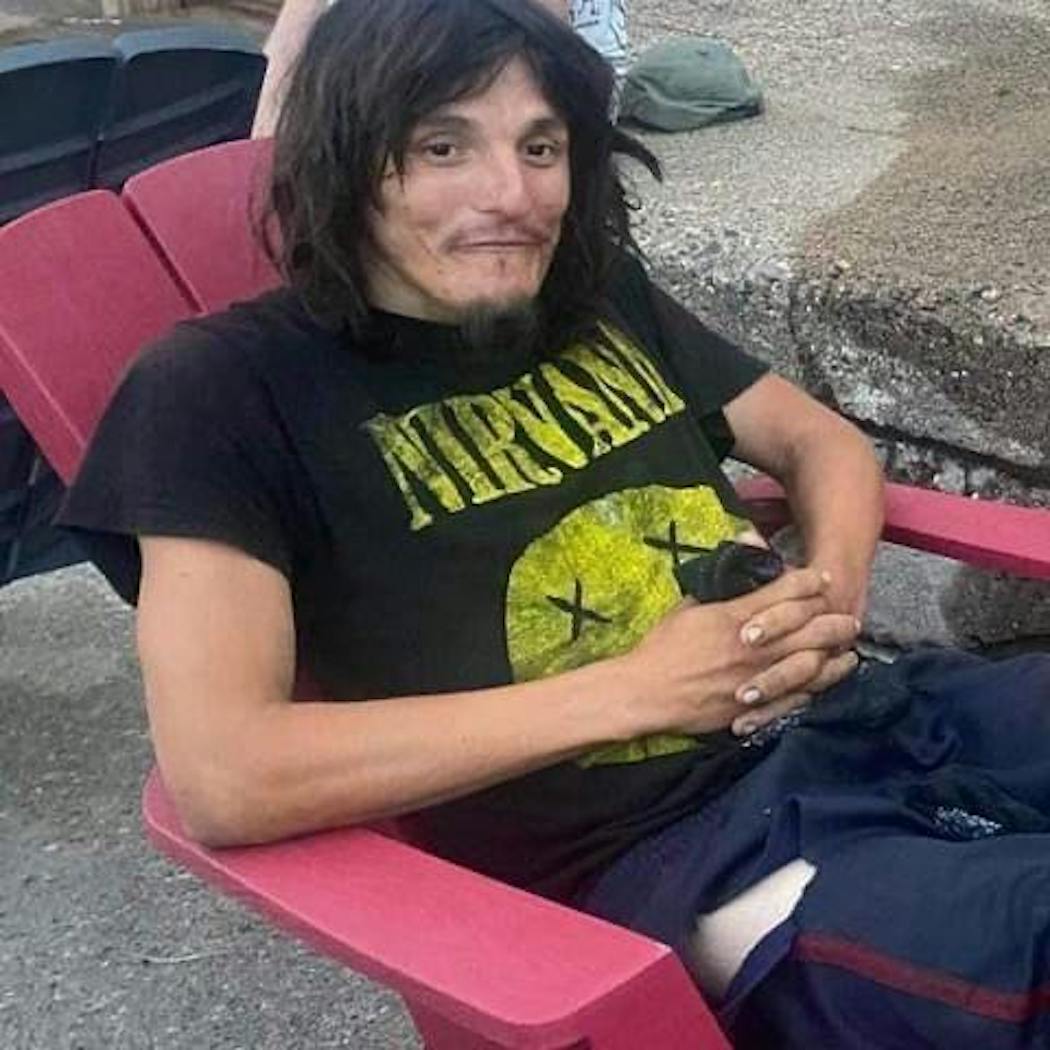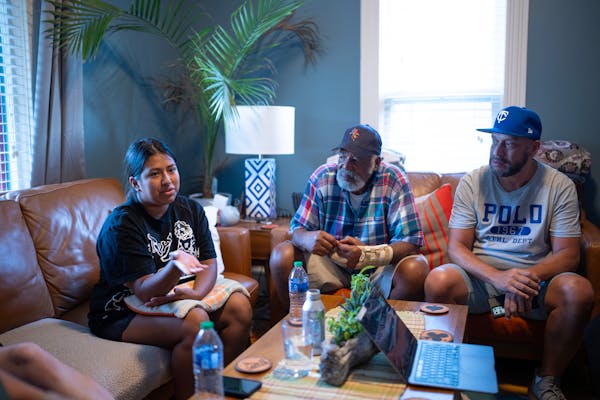Where Daniel "Dan Dan" Robertson's body lay in the basement of Gichitwaa Kateri church in south Minneapolis last week, photos showed him as a happy boy surrounded by family, and as a high schooler at Hinckley-Finlayson, 100 miles north of Minneapolis.
Family members didn't have any photos of him after that.
Robertson was about 16 when he moved to the city in want of two things: community, and his father, who struggled with substance abuse. He was 18 when his father died after being beaten on Franklin Avenue. Robertson was never the same, said his sister Elizabeth Robertson, 42. He turned to drugs and lived on the street.
"My brother Dan was always waiting for my dad to come back and get him, for him to sober up and do what he needed to do to come back," Elizabeth Robertson said.
Robertson was 32 when he died last month at the Wall of Forgotten Natives homeless camp along Hiawatha Avenue in Minneapolis after reportedly having a seizure and losing consciousness. His cause of death is unknown, though witnesses have raised concerns about whether first responders did enough to try to revive him. The agency representing the responders said they followed their training.
Named after the original tent city that stood at the same site five years ago, the Wall attracted some 140 people from smaller camps across Minneapolis following a succession of closures by the city and MnDOT. It too was closed the day after Robertson's death.
Robertson was respected as a kind and compassionate person by those who live unsheltered in Minneapolis' encampments. He was known to pick up trash around camp, provide power through his small electric generator and share what little he owned, said family members and encampment residents.
At the time of his death, there was an apartment in his name in St. Paul. Yet Robertson gravitated toward encampments and his second "family," because he couldn't stand the solitude.
At 3:55 p.m. Aug. 23, encampment residents called 911 when Robertson had a seizure in his tent as temperatures hit 98 degrees that afternoon. Someone gave him Narcan in case it was an opioid overdose, but the medicine had no effect.
Encampment organizer Nicole Mason, a Little Earth resident who does sobriety outreach, said Robertson had a pulse. Residents told dispatchers Robertson had been conscious and breathing. Two minutes into the 911 call, residents reported that Robertson's skin had turned pale and he was no longer breathing nor alert; they attempted CPR.
According to 911 logs and police incident reports, Hennepin Healthcare EMS couldn't find a pulse a short time later. They entered the camp at 4:04 p.m., checked Robertson's pulse, determined he was dead at 4:06 p.m., and turned to leave. A large crowd became angry when they saw EMS wouldn't try to resuscitate him.
"All the relatives were begging behind them, saying, 'Please stop, come back, he has a pulse, please,'" said Mason at a press conference the day after Robertson's death, when state troopers cleared the Wall.
Robertson's friends carried him to the edge of the encampment and placed him back in front of first responders. Reports said they checked his vitals a second time with a heart rate monitor to verify the lack of a pulse, and covered him with a sheet.
"There was no pulse and they state there was nothing they could do," wrote Minneapolis police officer Rebecca Footman. "I observed Robertson's skin had turned blue and pale."
When someone's skin turns blue, it usually indicates a lack of oxygen.
Robertson's cause of death is not known. His family has not received medical examiner reports, and a data request by the Star Tribune has not yet been answered. According to the Medical Examiner's Office, it can take four to six weeks to obtain the medical records that determine a cause of death. In Robertson's case, the office is still waiting on toxicology results.
His family doesn't know what to make of the conflicting narratives surrounding his death. According to opioid overdose training now widely available to the public through Hennepin County as well as the Substance Abuse and Mental Health Services Administration, if someone is turning blue with no pulse, chest compressions and rescue breathing should be performed while naloxone is continuously administered.
"Just because my brother was out there living like that doesn't make it right for someone not to help him," said Robertson's sister Rosie Robertson, 41. "I guess that's what I've been struggling with. He was worth fighting for."
Hennepin Healthcare spokeswoman Christine Hill said in a statement, "The paramedics and EMTs, along with other responders, use their training and guidance from medical protocols to perform an assessment of the patient and determine the appropriate interventions or resuscitation if there is any chance of survivability. Once on-scene assessments and treatments have been rendered, the patient may be transported to a hospital by ambulance, refuse care, be left in the care of another responsible party, or sadly – if the patient is deceased, the local police and medical examiner assume control of the incident scene."
Robertson's 24-year-old niece Alawnna Robertson said an aunt asked her to identify her uncle's body. Seeing him on the pavement haunts her. She'd rather remember how he was when they were young: always going somewhere on his bike, ringleader of a bevy of relatives, babies under his arm.
It's particularly hurtful to see social media snidery from strangers making light of his death at the Wall, Alawnna Robertson said, referring to posts calling for her uncle's body to be disposed of with the trash.
"He was very stubborn, quiet, smart as hell," said Robertson's brother John Robertson, 31. "He was a caretaker, my big brother."

Minneapolis education support workers authorize strike
Officials ID 14-year-old shot and killed while in SUV at northeast Mpls. gas station
Minnesota Republican congressional candidates seek endorsements at Saturday conventions

'No Mow May' eases to 'Less Mow May' in some Twin Cities suburbs



